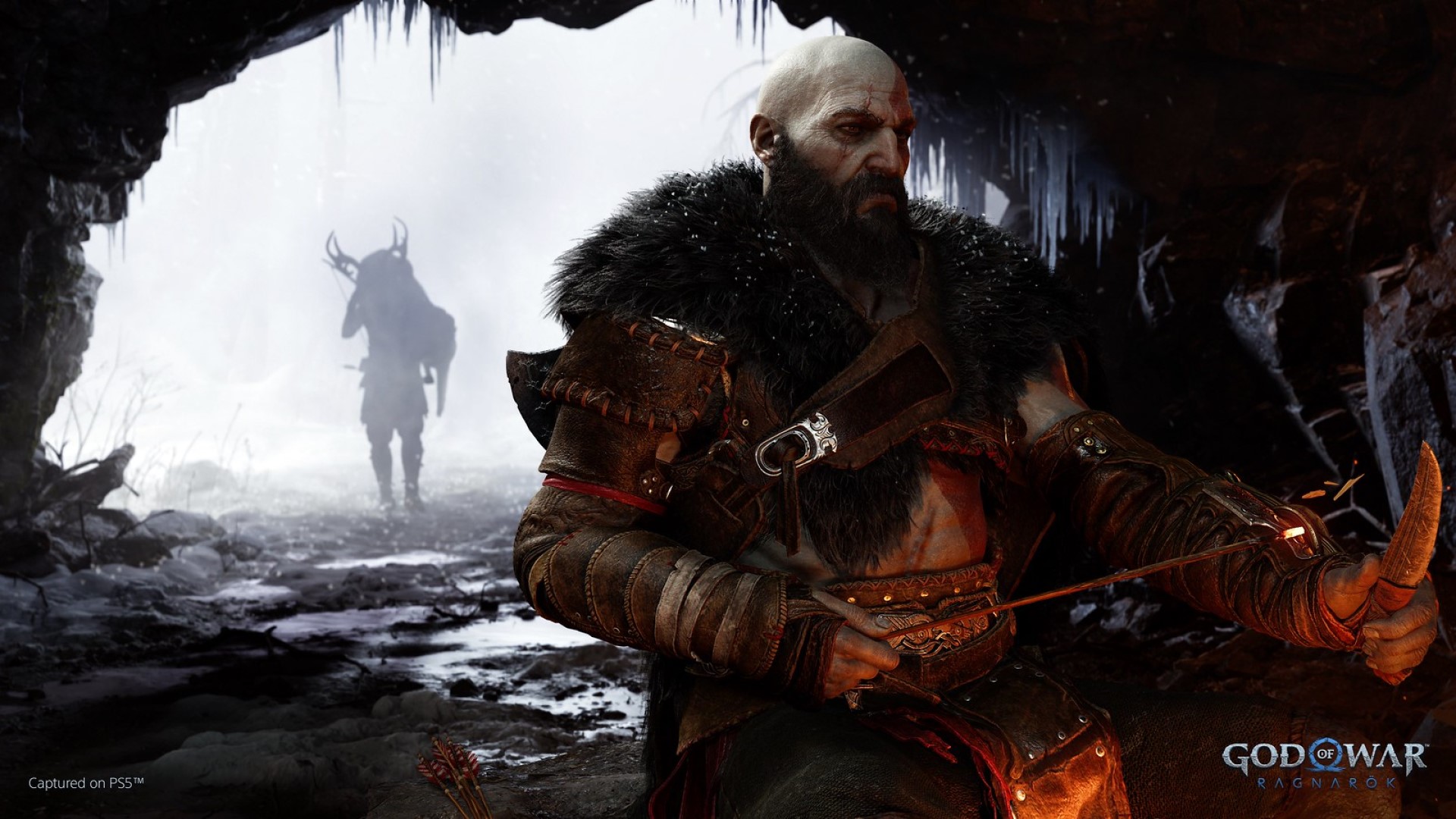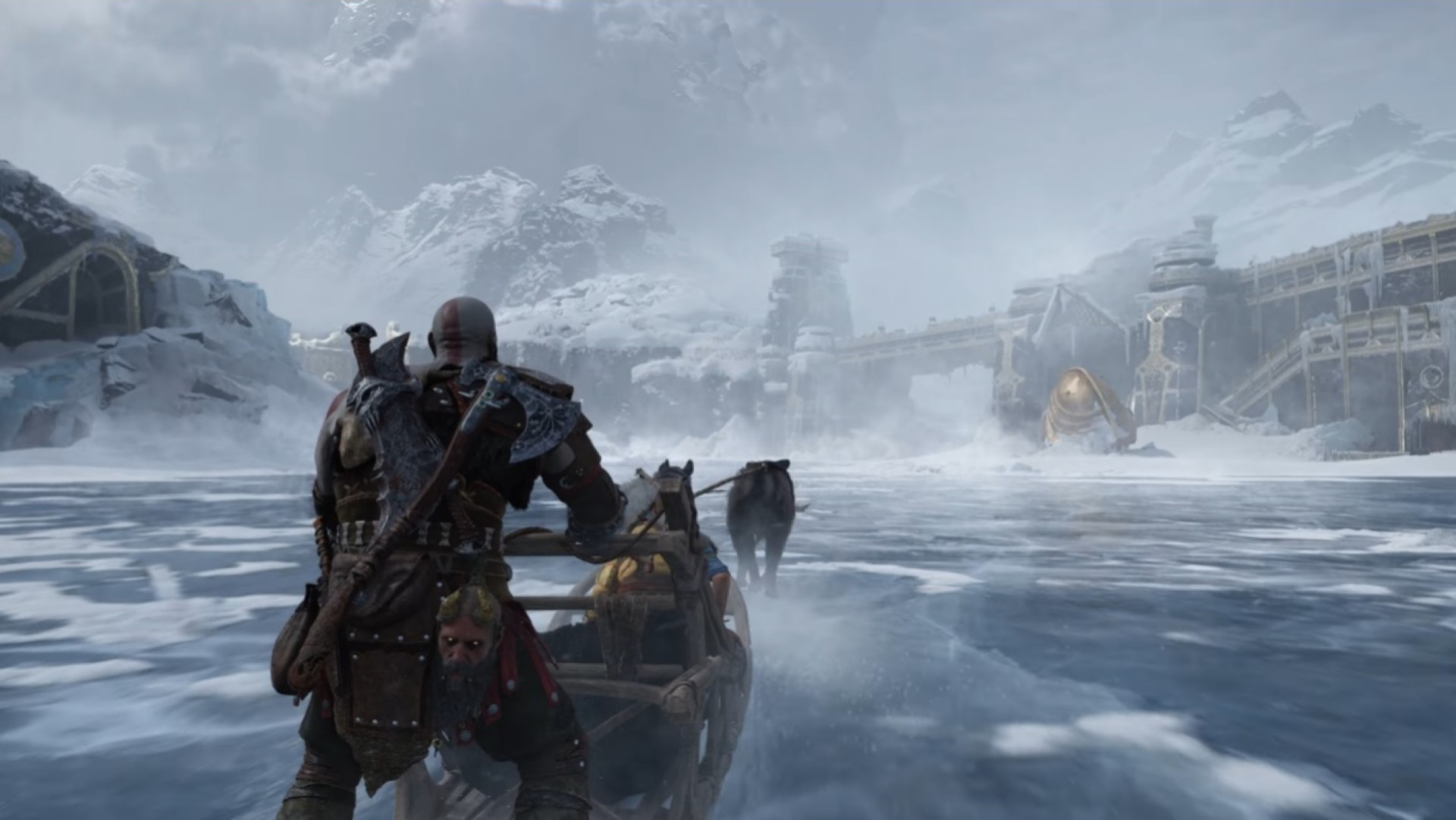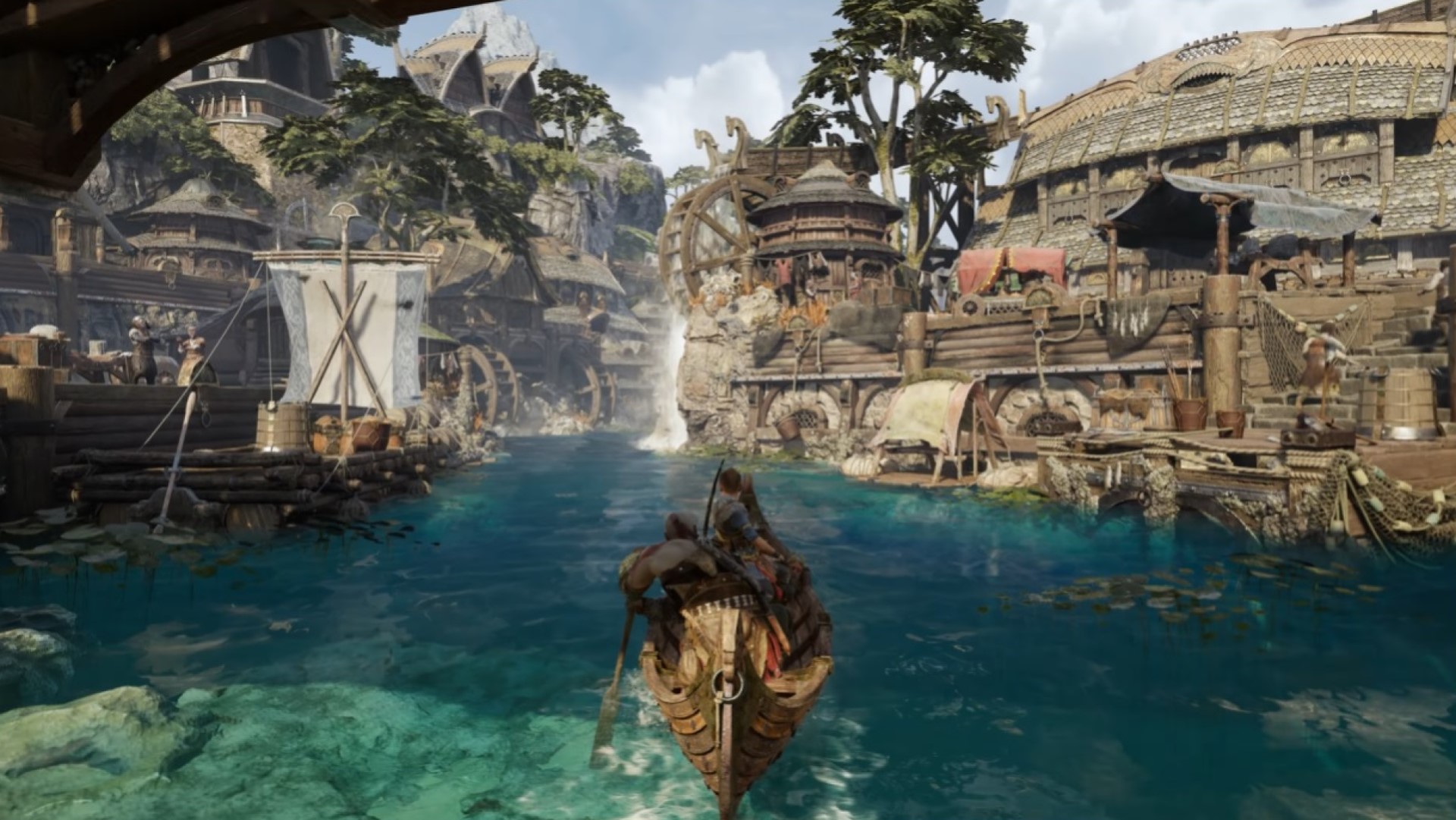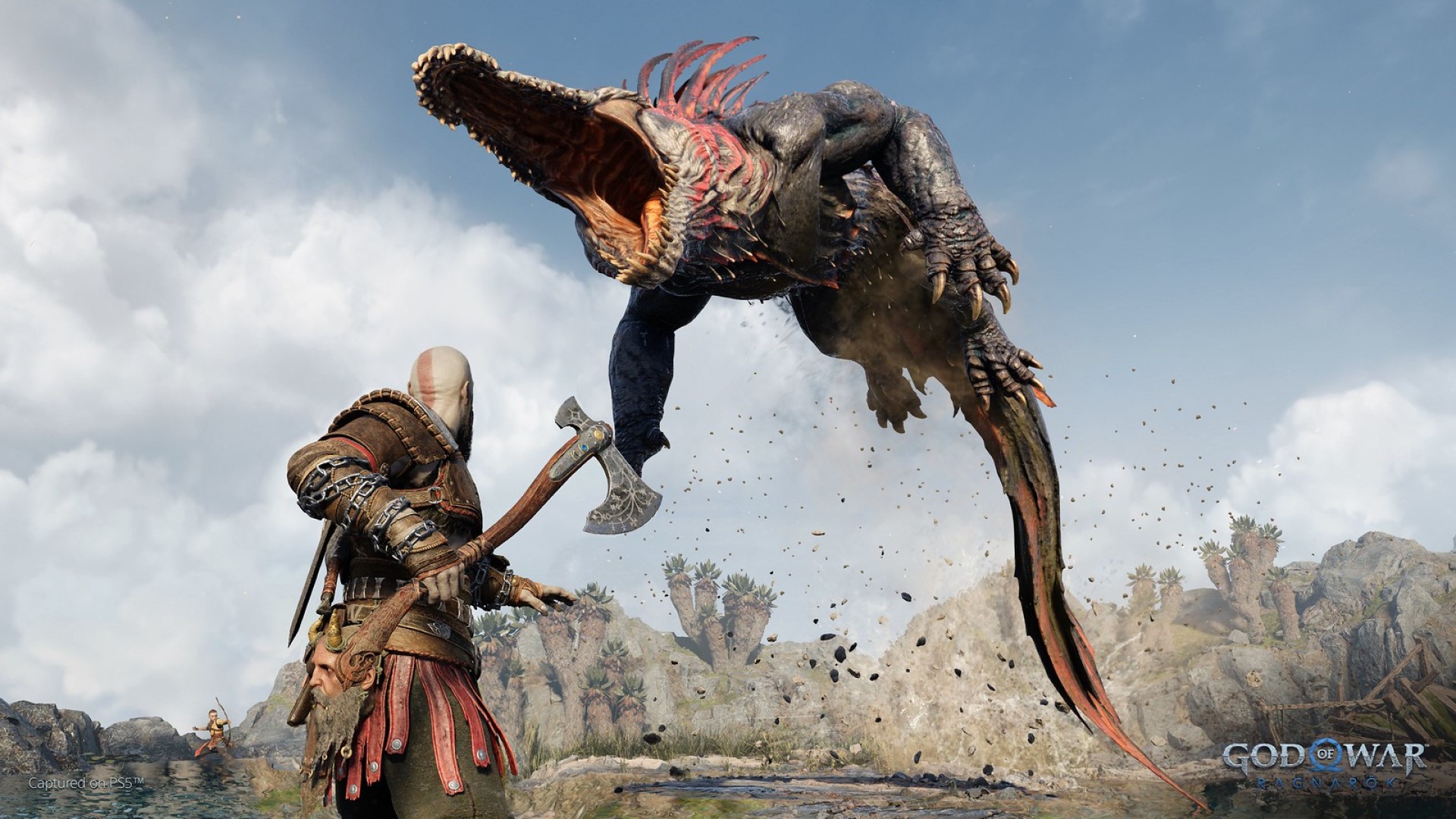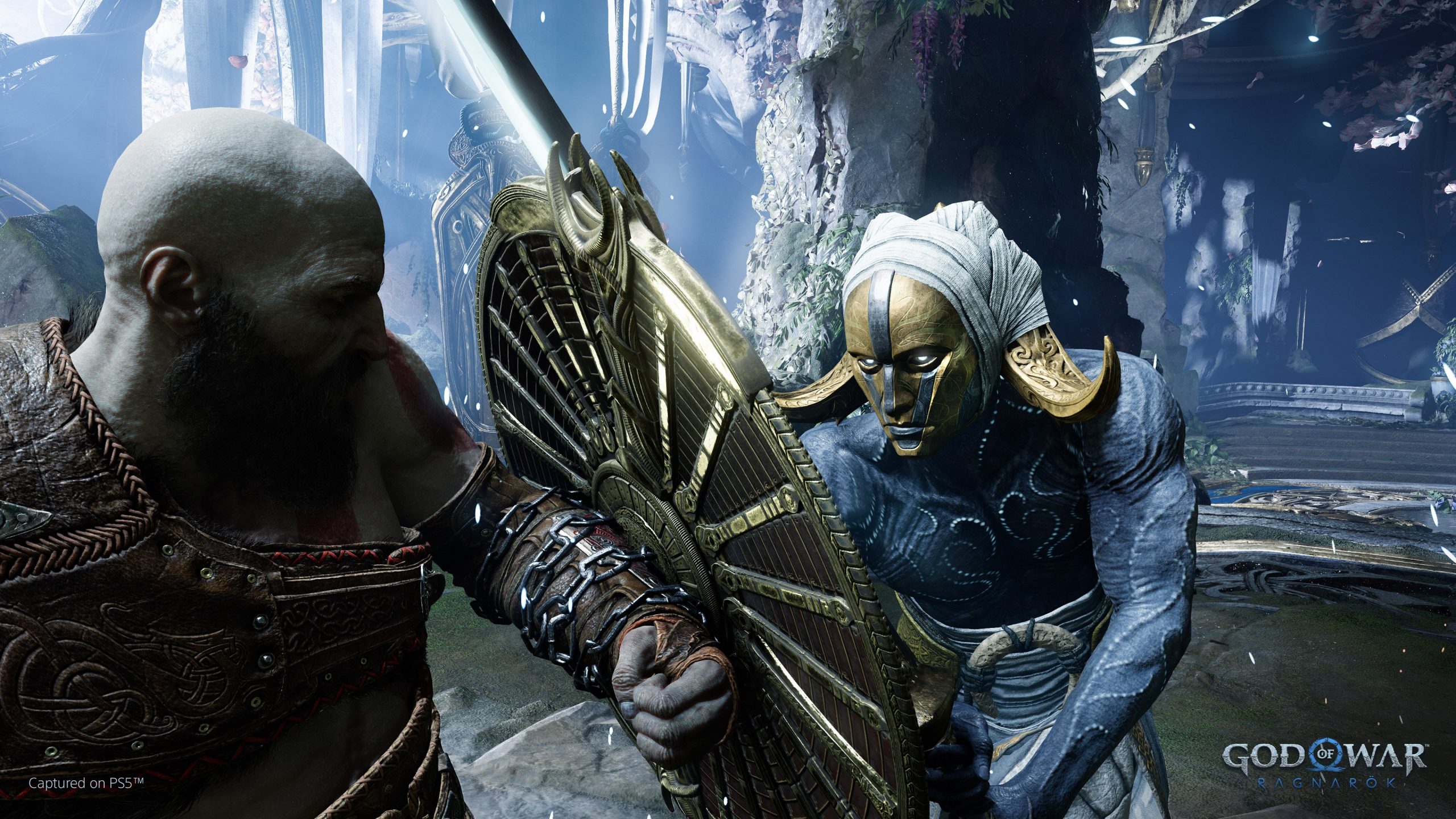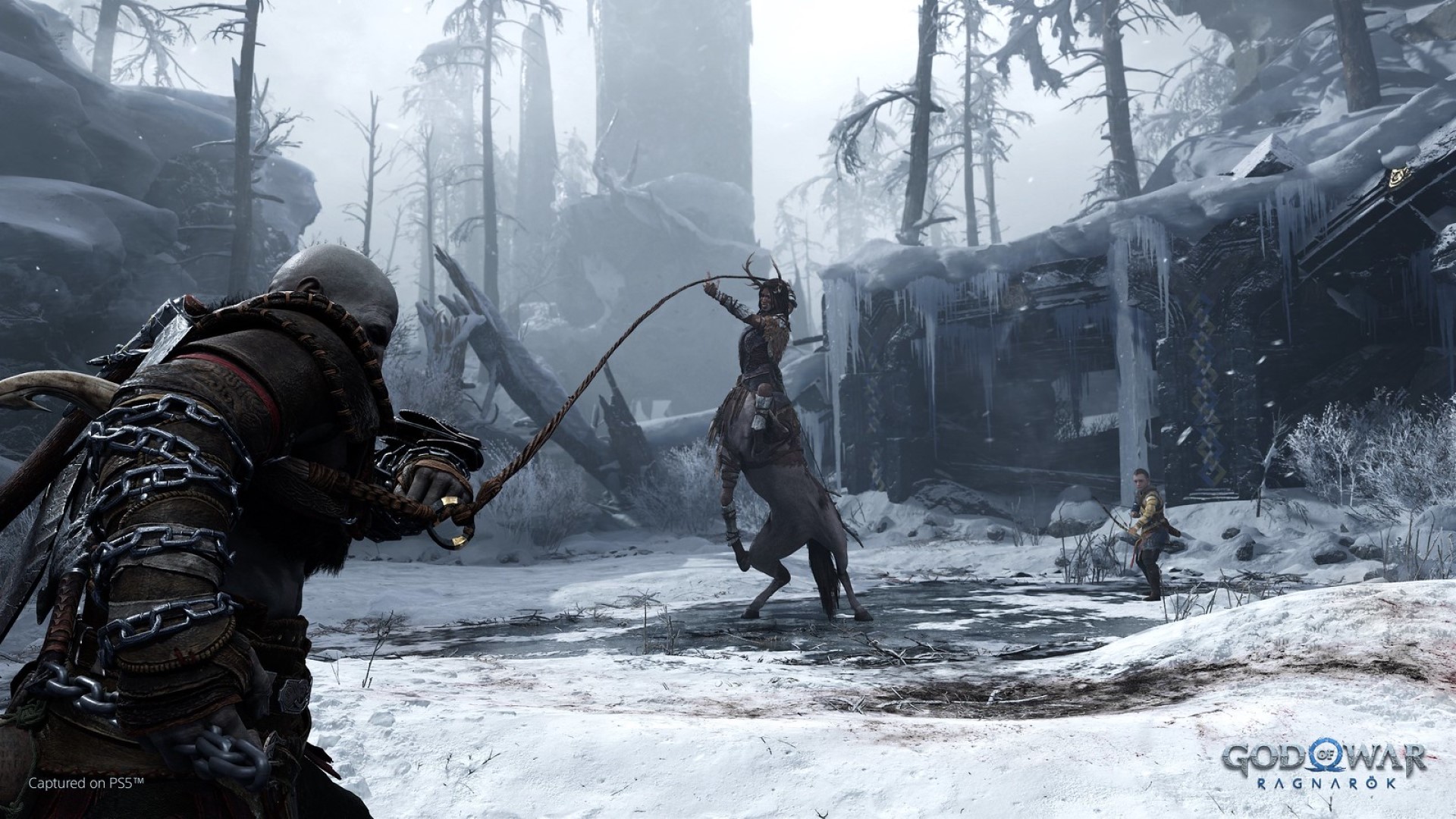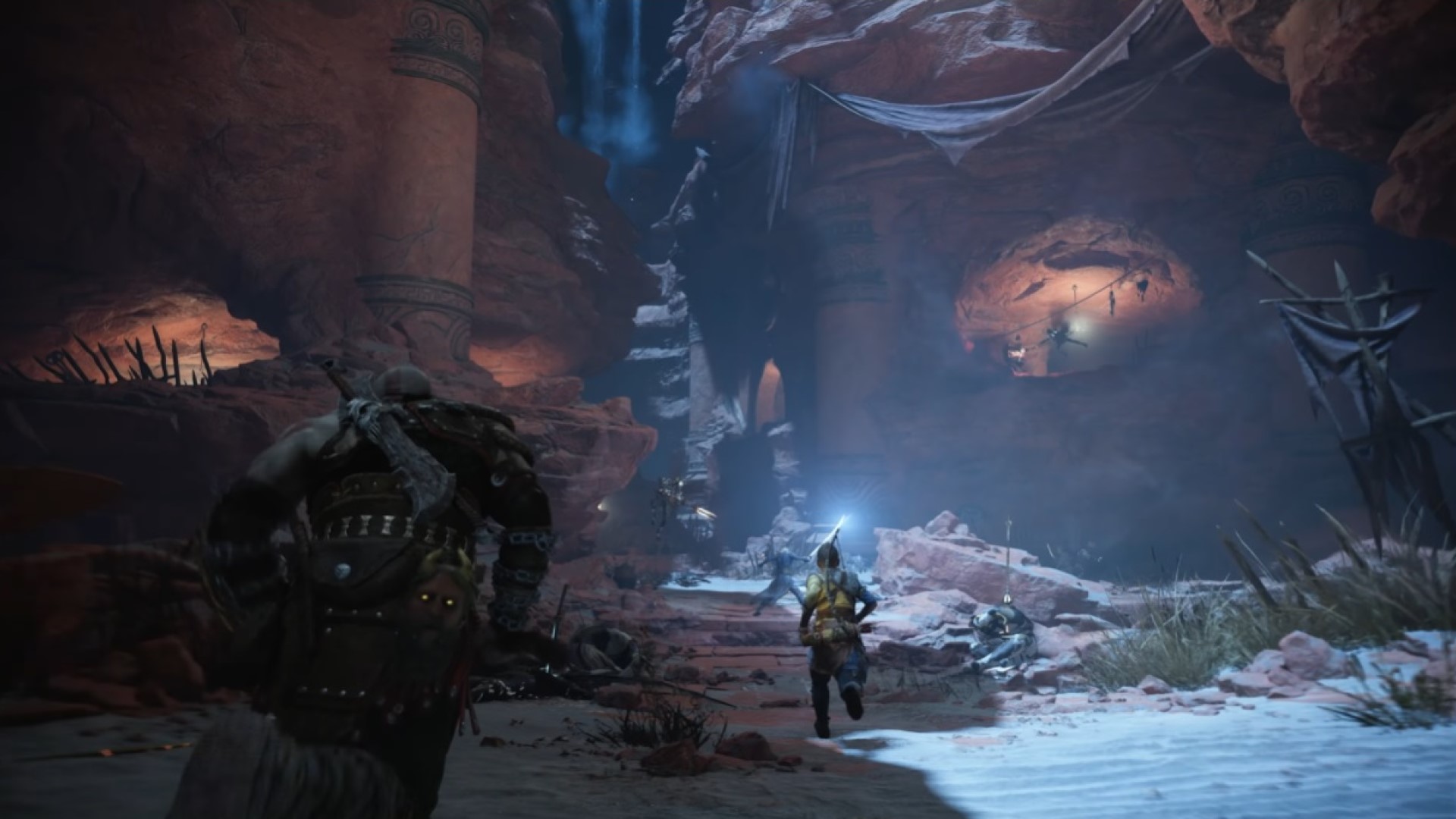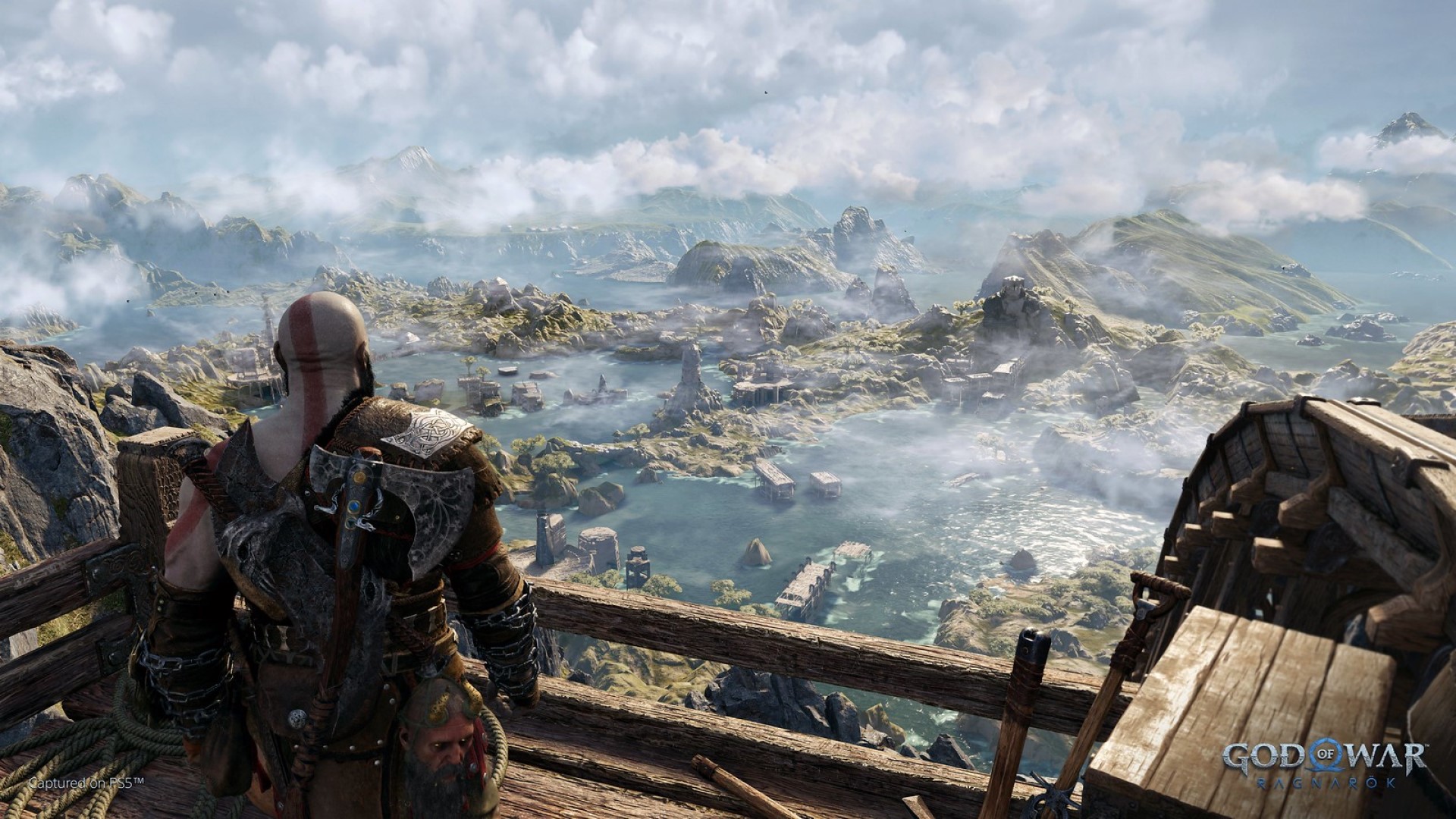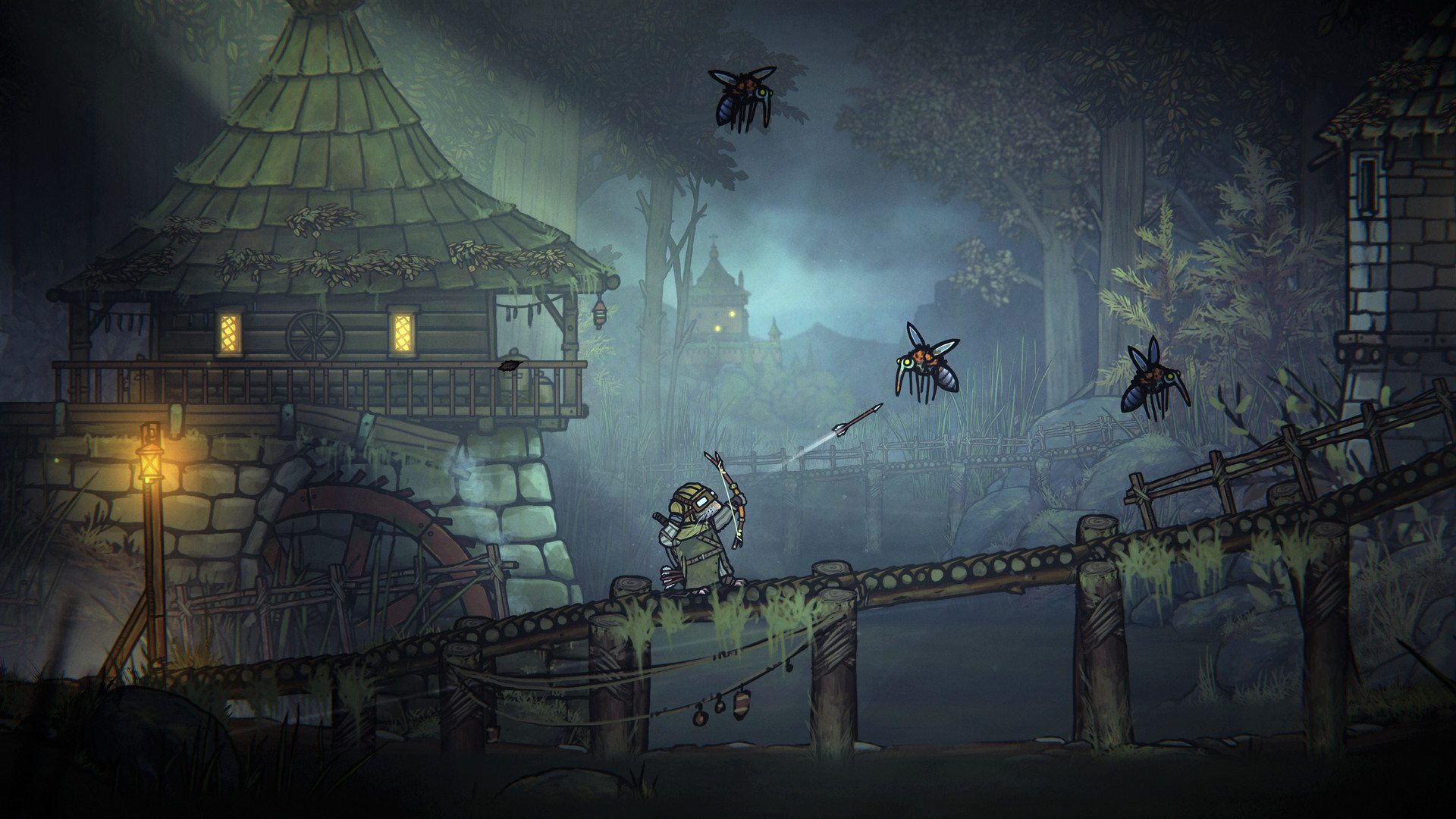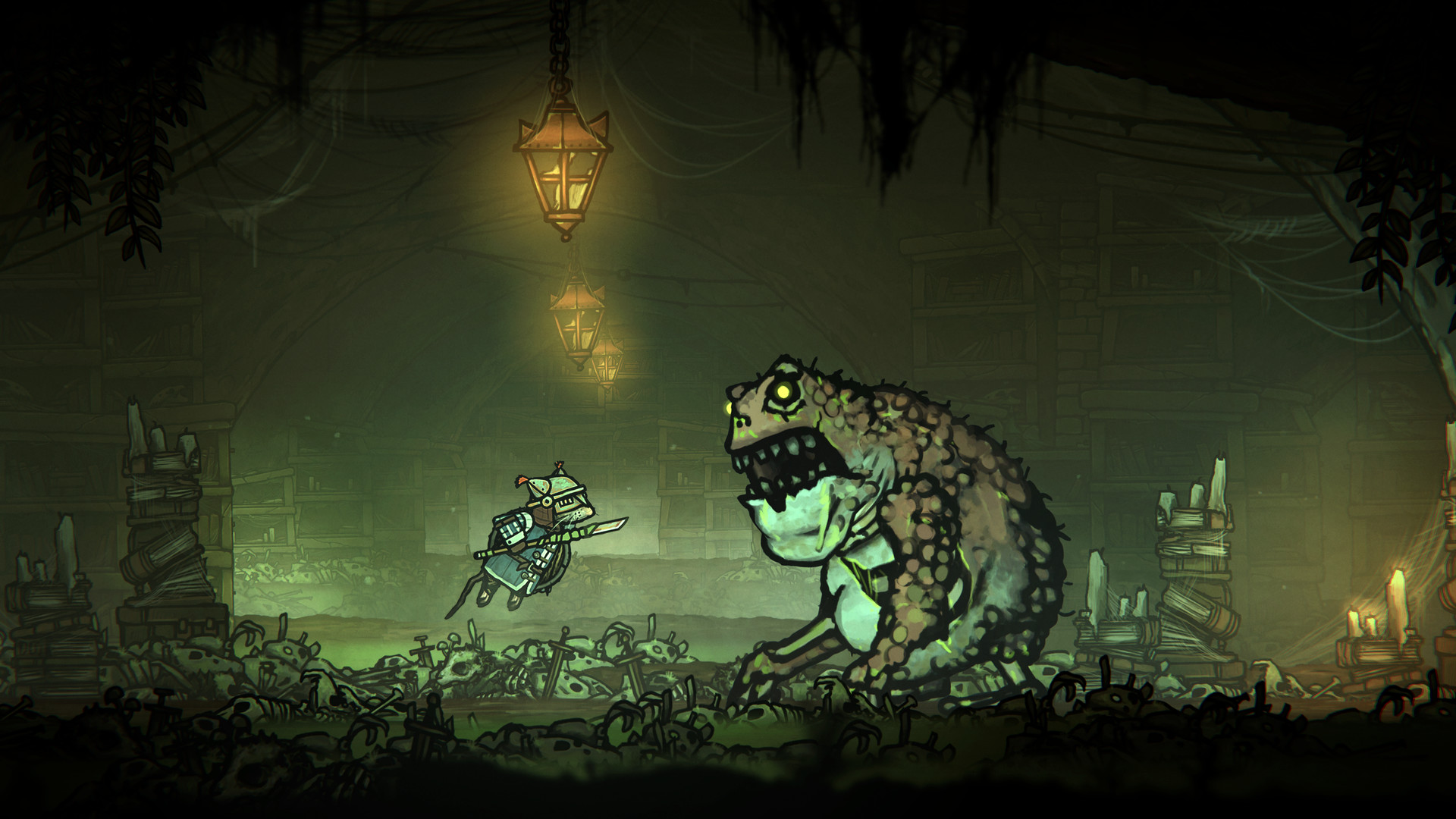God of War: Ragnarok – 9 More Things We've Learned About It
Sony and SIE Santa Monica Studio have been more generous with details on God of War: Ragnarok than most people would have anticipated. Thanks to a meaty reveal trailer and subsequent interviews and updates, we know quite a bit more about the game's story and gameplay than we'd have expected to know a year out from its launch. We recently spoke about some of the most crucial of those details in a recent feature, but plenty more information has emerged since then that we'll be going over here.
WHY IT WILL CONCLUDE THE NORSE SAGA
God of War: Ragnarok being the final game in the series' Norse saga has taken many people by surprise, but though most believed that we'd be getting at least a trilogy of Norse games, Santa Monica Studio is confident that it can wrap things up in just two games. And as it turns out, that was a decision made by none other than God of War (2018) director Cory Barlog, who's been replaced as director by Eric Williams for Ragnarok. Speaking in a recent interview with YouTuber Kaptain Kuba, Barlog explained that the primary reason for wanting to wrap up the story in two games was that developing an entire trilogy would have taken close to fifteen years, at which point the story, according to him, would have become "too stretched out." Barlog says that with that in mind, and given the story that Santa Monica Studio wanted to tell in Ragnarok, he was confident that they would be able to wrap things up by the time the credits rolled on the second game.
FIMBULWINTER
Ragnarok is, of course, the big event that the game is going to lead up to (it's in the name, after all), but before Ragnarok, there must be Fimbulwinter. As God of War: Ragnarok kicks off, we'll see all nine reals being affected by Fimbulwinter in different ways. Speaking in an interview with IGN, director Eric Williams said that you shouldn't expect every realm to be blanketed in snow and ice. That said, Midgard, as the epicenter of Fimbulwinter, got affected by "permafrost," as Williams calls it, which we saw quite a lot of in the game's reveal trailer as well, including the completely frozen Lake of Nine.
CAMERA
God of War (2018) did a lot of bold and interesting new things, and one of its many experiments that paid off was its camera. On top of dropping the series' traditional semi-fixed cameras and instead taking a zoomed-in over-the-shoulder third person view, God of War (2018) was also a single uninterrupted camera shot from start to finish. An impressive achievement, if nothing else. Unsurprisingly, it's been confirmed that God of War: Ragnarok, too, will be a single camera shot from beginning to end without any cuts or interruptions.
PLAYER EXPRESSIVENESS
God of War: Ragnarok is building off of an excellent foundation in the combat department as it is, and it looks like Santa Monica Studio has the right ideas for how to improve things even further in the sequel. One thing that Ragnarok's combat is apparently going to emphasize quite a bit is player choice. Speaking to IGN, Williams said that one of the primary goals of the development team has been to give players various tools to deal with enemies, from gear upgrades to various attacks and combos to more link-ups with Atreus and more. Meanwhile, with players having a wider range of offensive options, enemies, too, will be more defensively and offensively capable themselves, which means players should (in theory, at least) be encouraged to properly leverage their full arsenal.
VERTICALITY
This is another area where God of War: Ragnarok is improving upon its predecessor's combat- by incorporating level design into combat encounters themselves. As we saw in the reveal trailer, Kratos will be able to use his Blades of Chaos as a grapple hook to pull himself up to higher ledges, calling back to grappling from older God of War games. This, as per Williams, is baked into the combat as well, with encounters being more vertical and players being encouraged to make proper use of the space around them. Of course, enemies, too, will be able to use this verticality to their advantage, which should make for some interesting encounters.
MORE COMBAT DETAILS
The Blades of Chaos making their grand comeback halfway through God of War (2018) was a moment that those who's played the game aren't likely to forget anytime soon- but the Blades were very much that game's secondary weapon. Ragnarok isn't going to sideline the Leviathan Axe, of course, but it looks like Santa Monica Studio is going to take advantage of the fact that the Blades of Chaos are going to be usable in the entire game, right off the bat. And that're doing it in a way that is sure to please series veterans, by bringing back a lot of moves and combos from the older God of War games. We've already seen a few of these in the reveal trailer, like Kratos using the Blades to grab an enemy in the air and slam it into the ground, or using them to pull himself forward and ram into an enemy, or even the grapple. In the aforementioned interview with Kaptain Kuba, Williams said that combat with the Blades of Chaos in God of War: Ragnarok will bring back "the greatest hits of things [they] didn't get to" in the previous game.
VALKYRIES
The Valkyries may not have been a critical part of the main story in God of War (2018), but they most definitely were a critical part of that experience as a whole, and were some of the most challenging, grueling, and entertaining boss fights in that entire game. We don't know in what capacity we'll be seeing the Valkyries in God of War: Ragnarok, but we do know that they will be returning- and better still, that there will be two entirely new Valkyries. Actors Erica Lindbeck and Evanne Elizabeth Friedman have confirmed that they'll be playing Hrist and Gna in the game, but it remains to be seen how prominently they'll be featured in the game.
EINHERJAR
Kratos and Atreus are going to be taking on the Norse pantheon in their attempts to stop Ragnarok, which means that they're going to be squaring off against Odin himself- who, of course, will use every tool he has at his disposal. That includes the Einherjar, who are deceased Norse heroes and warriors who were delivered by the Valkyries to Valhalla upon death, so that they could fight for Odin when Ragnarok comes. It's more than a little likely that Kratos and Atreus will be squaring off against a few of these great warriors. Various actors, including Laura Stahl, Anna Brisbin, and Aaron Phillips, have confirmed that they're playing Einherjar in the game.
MUSIC
Music has always been one of God of War's strong suits, even going back to the PS2 days. And just as God of War (2018) reinvented its gameplay while still feeling like a proper God of War experience, so, too, did it wipe the slate clean with its music, thanks to an excellent soundtrack composed by Bear McCreary that was completely new and fresh, and yet still felt like God of War. In Ragnarok, McCreary has confirmed that he will be returning as composer, much to the delight of series fans.
ELEX 2's Story Trailer Teases Impending Disaster
Over the last several years, we've seen a revival of sorts, at least within the mainstream, of a certain type of RPG. Thanks to games like The Witcher 3 and other smaller scale hits like GreedFall, the more western styled RPG has gotten a new wind. One of those games was 2016's ELEX, a hybrid fantasy and sci-fi game. The sequel was announced not too long ago, and now we get an idea of what this new story will be about.
A new trailer, which you can see below, was released that highlighted the game's narrative. Here the protagonist, Jax, is going around trying to warn the various factions of the game about an impending threat. He's largely met with resistance in the form of dismissal and hostility. We get to see a host of characters and locales you'll interact with, as well as the dark threat that looms over the world.
ELEX 2 has been announced for PlayStation 5, PlayStation 4, Xbox Series X/S, Xbox One and PC. As of now, no date or timeframe has been announced. You can check out an interview we did with the game's Creative Director about the title through here.
Destroy All Humans! 2 Remake Confirmed At THQ Nordic 2021 Digital Showcase
THQ Nordic has finally lifted the curtain on its upcoming Destroy All Humans! 2 – Reprobed remake during its digital showcase today. Check out the video below for more details.
Destroy All Humans! 2 – Reprobed is of course, the second part of this popular franchise. This remake – much like the original – is a complete reimagining of the original with a brand-new graphics engine and revamped gameplay mechanics. The remake will also include couch co-op like the original.
Considering how big of a success the remake for the first game was, it's no surprise that THQ Nordic would want to continue giving the same treatment to other entries of the franchise. This announcement, however – isn't a surprise, given that the reveal was accidentally leaked yesterday by PlayStation. Details on the release date are scant for now, but THQ Nordic has confirmed PS4, PS5, Xbox One, Pc, Xbox Series X, and Xbox Series S as release platforms for the game.
The THQ Nordic showcase concluded recently, and has brought with itself a plethora of new and interesting reveals. In addition to a gameplay trailer for Destroy All Humans! – 2 Reprobed, the showcase had a number of interesting titles to look forward to in the coming months.
SpongeBob SquarePants: The Cosmic Shake is a new adventure featuring the titular cartoon, and is a follow-up to the hit title SpongeBob SquarePants: Battle for Bikini Bottom. No actual gameplay or release date has been confirmed yet, but fans of Bikini Bottom should definitely keep an eye out for the game.
A cinematic reveal trailer for Outcast 2 was also shown off during the showcase, which looks stunning from a visual standpoint. Its known to be a third-person shooter with an open-world which is of course, a follow-up to the 1995 classic, but other details are shrouded in mystery at this point in time.
Apart from these two titles, trailers for MTX vs ATV Legends and ELEX 2 were two major games also shown off during the event. Check all of these out below.
Xbox Series X/S Expansion Cards May Come In 500 GB Variants – Rumor
French website Xbox Squad has recently reported that Microsoft might be planning to release a new 500 GB variant of its Seagate expansion cards soon. According to the report's sources, Microsoft is planning to release it for a price of 125.71 pounds.
Adding up for taxes, reports suggest that Microsoft may be targeting for a price in the range of 149 to 169 pounds. Shortly after Xbox Squad posted the report, an internal listing for the same was tipped off to the website by a source. Xbox Squad claims that Microsoft will launch the new SSD on November 14.
Of course, it goes without saying – take all rumors with a healthy grain of salt. However, given that Sony's SSD options are inarguably more flexible albeit not as consumer-friendly to install, Microsoft's plans of offering more options for expansions isn't far-fetched. More information on the matter would be dropping sooner rather than later, so stay tuned for more details.
Splitgate Will Have A Forge Mode Before Halo Infinite, 1047 Games Reveals
1047 Games took to Twitter to reveal to its fans that Splitgate would be receiving a Forge mode styled map editor before Halo Infinite. In a response to a tweet by KFC Gaming, Splitgate revealed this information which has fans excited for the future update.
Of course, its known that Halo Infinite wouldn't feature campaign co-op and Forge mode on its December 8th launch. It will be added during the Season 2's update, which will arrive 3 months after launch. 1047 Games still has plenty of time to create its map editor, which should prove to be a great addition to this ever-evolving arena shooter.
Splitgate has proven to be a massive success for developer 1047 Games. The success has been so unprecedented that the developers have continually been struggling with server capacities, all the while making claims and ambitious plans for the future of the game.
Splitgate will have forge mode before Halo Infinite.
(Sorry in advance Halo fans, we love you but we had to)
— Splitgate – Season 0 (@Splitgate) September 15, 2021
Tails of Iron Review – Functional, but Forgettable
It's not every day that you come across a game that juxtaposes a whimsical story-book art style full of forest animals with a brutal weapon-based combat system. It's also equally uncommon for such ideas to blend together in a seamless way that doesn't feel forced or inorganic. Tails of Iron strives to be a game that accomplishes all of this with its light emphasis on RPG mechanics and a rather bleak, somber overall tone. While it does seem to check a lot of the boxes that a game like this should, I still never quite felt all of its pieces click into place in a consistently satisfying way.
Tails of Iron starts off at the peak of a long-fought rivalry between two kingdoms; the frogs and the rats. After a sustained period of tranquility, the rat kingdom once again finds itself in peril as the aging king can no longer protect it. Of course, the heir to the throne is his son, who you control throughout the treacherous journey of rescuing and re-establishing the rat kingdom to its former glory. This won't come easy though, as legions of warty frogs revel at the chance to stand in your way. The story is about as cookie-cutter as it gets for RPGs, and you shouldn't go into it expecting any interesting twists outside of the archetypal characters that you normally see in games like this replaced with rats and frogs. It does set itself up well despite unabashedly refusing to deviate from the formula in almost any meaningful way. How much it's predictability might bother you will largely depend on how much the minutiae of the story of a game like this matters to you. To its credit you do get a pretty good sense of the tone of the game from its highly detailed world. Everywhere you look there is a visual feast. Ruins and macabre pepper every area and the nice variety of color pallets and multitude of scrolling layers go a long way to establishing the vibe – even if the story itself doesn't.
"While Tails of Iron does seem to check a lot of the boxes that a game like this should, I still never quite felt all of its pieces click into place in a consistently satisfying way."
Tails of Iron's gameplay is a similarly mixed bag. It checks a lot of the side-scrolling action-RPG boxes well enough with a wide variety of weapons and shields that make you balance out their effectiveness with their weight, a handful of enemy types that require different approaches to take down, and the occasional bit of backtracking and side quests that can sometimes make the game feel like something bigger than it actually is. Depending on what you're looking for from this sort of game, it could be right up your alley if you don't want to deal with the complexities of truly deep combat or be overwhelmed with the open-ended nature of a really expansive world. Afterall, there is nothing wrong with a simplistic take on a genre that normally sees more complex games come out of it. And to its credit, there is a bit more meat on the bone than first meets the eye with food recipes that can be learned and a fair amount of weapons and armor that can be collected. But Tails of Iron's primary problem is not it's watered-down nature; it's that it doesn't make any of its main mechanics fun or satisfying enough to weather the storm of monotony that inevitably rolls in once you notice it's small handful of ideas starting to repeat themselves.
The combat of Tails of Iron is presented as the main course, and does have a few functional albeit boiler plate ideas that keep it from falling into complete mediocrity. Sneaking a few hits in between using your shield to block, dodging when red indicators are shown, and parrying when yellow indicators are shown is a delicate dance that can be fun when it's all happening at once and you're in the zone. Certain enemies might hang back and fire arrows at you while you're dealing with others in close-quarters, and depending on the situation you could justify going after either one first. When bigger enemies come in however, they tend to have more distinct patterns that, in turn, force you to fight them in very specific ways that rarely allow for much experimentation.
You'll learn this quickly, as fighting more than a few basic enemies at a time in the "wrong" way can quickly result in a chain reaction of getting bashed by all of them and killed before you even know what hit you. Parrying requires two button presses, both of which are triggers, so it can feel a bit mushy and imprecise to pull off, which doesn't mix well with the short windows of time you're often given between seeing that yellow indicator and getting hit. Dodging works well enough, but it won't work with enemies that are expecting a parry – only the red-highlighted enemies that require a dodge. Not only does it not work, but it will likely result in getting hit by default. So, when you are pulling it all together it can feel more like a squishy rhythm game than a combat system. Finishing moves are there, but at their best are only mildly amusing.
"The combat of Tails of Iron is presented as the main course, and does have a few functional albeit boiler plate ideas that keep it from falling into complete mediocrity."
Had the combat itself been more versatile and satisfying, replaying the same fights multiple times to find the "right" way to beat them could have been an interesting hook, but here, repeat attempts get stale long before they should. Thankfully it doesn't rub any salt in the wound with sparse checkpoints or some sort of cumulative punishment for dying. But aside from that, with most attacks feeling stilted and unenthusiastic due to the rigid nature of the character models, the moment-to-moment combat in Tails of Iron often feels like a series of generic ideas held together by its presentation and mostly mediocre execution. I'll stop far short of calling it bad, because it's not, but I'm equally uncomfortable with calling it particularly good.
Thankfully, the game's many combat sections are broken up by some platforming and dialogue moments in a way that feels well-paced. You will find yourself climbing up walls, wall-jumping, even climbing across some ceilings. Traversal feels good enough, but much like the combat, nothing particularly interesting is ever really done with it to add to the overall experience or make those ideas feel organic to this game. The dialogue with other characters do their job at conveying certain ideas in a cute way by using animated pictures instead of words to convey certain concepts. It's a neat idea, but the lack of text and voice also severely limits these characters' chances of being identified with or standing apart from each other.
There's no real way for any of them to express unique personality traits with such a rudimentary style of communication. Perhaps the developer felt like the personality brought to the overall game from having this style of dialogue outweighs the loss of personality that each character suffers from it, but I'm not so sure it does. It ultimately feels like they traded away an opportunity to get me to care about the characters and thus, the story, more. It also doesn't help that the noises used to represent characters' vocalizations are usually more annoying than not – especially after hearing them for the 7th or 8th time within just a couple of minutes. All things considered, I was surprised to see Tails of Iron playing it so safe in so many ways given the intriguing first impression it made with me.
"Tails of Iron never quite falls flat on its face. It's a functional and serviceable addition to its genre that gives players a well-realized world to experience and can provide some meaningful challenge all while running respectably well. But with its somewhat wooden combat being the centerpiece, garnished with generic platforming and small handful of other slip-ups, it can sometimes be too much for its glimmers of inventiveness to overcome."
Ear-splitting dialogue sound effects aside, the music and sound is actually an area where the game shines quite a bit overall. The music always seems to fit the situation well with thundering cellos during important battles and buoyant mandolins accompanying calmer sections. It all creates a perfect auditory foundation on which the visuals easily stand. In fact, the blend of sight and sound here are so good that, had the game leaned into it a bit more, it could have really gone a long way to saving the experience from the doldrums of its gameplay.
Tails of Iron never quite falls flat on its face. It's a functional and serviceable addition to its genre that gives players a well-realized world to experience and can provide some meaningful challenge all while running respectably well. But with its somewhat wooden combat being the centerpiece, garnished with generic platforming and small handful of other slip-ups, it can sometimes be too much for its glimmers of inventiveness to overcome. The game's friendly price and obvious triumphs in art style and music might be enough for some to see it through, but as far as side-scrolling action RPG's go, there are just too many other ones that do much better what Tails of Iron is aiming at for me to recommend it broadly. You can certainly tell that there's a lot of heart behind the game's general concept, and I'm always down for a dark rodent-themed adventure. But the fact that almost none of the game's ideas ever reach any notable heights, creates an unfortunately low ceiling for the overall experience.
This game was reviewed on the PlayStation 5.
Gran Turismo 7 Will Use Ray-Tracing Only in Replays
Gran Turismo as a series has traditionally been a technical showcase for any and all hardware that it has graced, but with Gran Turismo 7 being a cross-gen game, many are wondering just how much the game's going to be able to get out of the PS5's hardware. Of course, it looks excellent, from what we've seen of it so far, but what PS5-exclusive features can we expect to see fully leveraged?
The game's still a few months out from launch, so a clearer idea of that is probably going to crystallize in the lead-up to launch, but it seems like ray-tracing, at least, is going to be implemented in very limited fashion. In an interview with Game Watch, series producer and Polyphony Digital boss Kazunori Yamauchi confirmed that "for the time being" players will only be able to enable ray-tracing in the game's PS5 version during cutscenes, where you can "see the stage demo and the picture with ray tracing applied in the garage."
Of course, with some time left still before Gran Turismo 7 releases, not to mention Yamauchi saying that this is the case "for the time being", there is a chance (hopefully, at least) that ray-tracing features in the game are expanded between now and launch.
Recently, it was also confirmed that Gran Turismo 7's single player campaign will require an internet connection, with Yamauchi explaining that the restriction has been imposed to prevent cheating, among other factors. Meanwhile, it's also been confirmed that the game will support cross-gen multiplayer.
Gran Turismo 7 launches on March 4, 2022 for PS5 and PS4.
Sherlock Holmes: Chapter One Has Been Developed Without Crunch
Crunch in the gaming industry continues to be a heated topic, with the effects still being seen in titles like CD Projekt RED's Cyberpunk 2077. So it's often good to hear about games that didn't need crunch like Psychonauts 2, Ratchet and Clank: Rift Apart and so on. Frogwares' Sherlock Holmes: Chapter One can be added to the list as well.
On Twitter, the developer reaffirmed the recently announced release date while confirming that the title had been made "100 percent with zero crunch. None whatsoever." The story stars a younger Sherlock Holmes who, after the death of his mother, ventures to an island in the Caribbean to investigate her murder. What he discovers is a society rife with corruption and a conspiracy afoot.
Like previous games in the series, players will gather evidence and then either name different suspects or choose to pardon them (with differing results). Combat is also a factor as Holmes can rely on firearms, takedowns and the environment to one-up foes. Whether one resorts to brute force in the first place is completely up to them.
Sherlock Holmes: Chapter One releases on November 16th for Xbox Series X/S, PS5 and PC. It arrives a few weeks later for PS4 and Xbox One. Stay tuned for more details in the meantime.
Sherlock Holmes Chapter One is coming out this November 16th.
And it has been made 100% with 0 crunch.
None whatsoever.
— Frogwares (@Frogwares) September 17, 2021
Halo: The Master Chief Collection Will Drop Seasonal Model Following Infinite's Launch
343 Industries' insistence on turning things around for Halo: The Master Chief Collection since its disastrous launch years ago has been remarkable to witness, and the collection is currently in great shape, thanks in large part to the consistent support it keeps receiving in the form of updates, fixes, and new content. Of course, with Halo Infinite launching soon, some have wondered whether that means MCC's support is going to slow down- which will indeed be the case.
343 Industries has confirmed in a newly published update on Halo Waypoint that once Halo Infinite has launched and the studio begins focusing on its seasonal post-launch model, the current seasonal model of Halo: The Master Chief Collection will come to an end, with the studio instead focus on smaller and less frequent updates. 343 assures, however, that there will still be new content and updates coming to the collection, with "a lot of goodness" in store for 2022.
"As we think about the future, we've had a lot of conversations around how to best support MCC once Halo Infinite's free-to-play multiplayer is up and running," the developer wrote. "We've agreed on two key points: One, we have more MCC work to do and support will continue; and two, as a studio it's not ideal to run and continue shipping seasonal updates for two different multiplayer titles concurrently. So, while we very much have more updates coming – including more content, fixes, and features – the manner in which they are delivered is expected to shift. Starting next year, we're targeting pivoting away from our current seasonal model and cadence to instead focus on smaller MCC updates that can land when they're ready based on development status and studio roadmap alignment. These updates will continue to be free and will include the unreleased features and content from this year – as well as a continued effort to improve stability and tackle legacy fixes where possible. We still have a lot of goodness to deliver in 2022."
Halo: The Master Chief Collection is available on Xbox Series X/S, Xbox One, and PC, and Halo Infinite launches for the same platforms on December 8. Before that, later this month on September 24, its second multiplayer technical preview will be kicking off. Read more on that through here.
